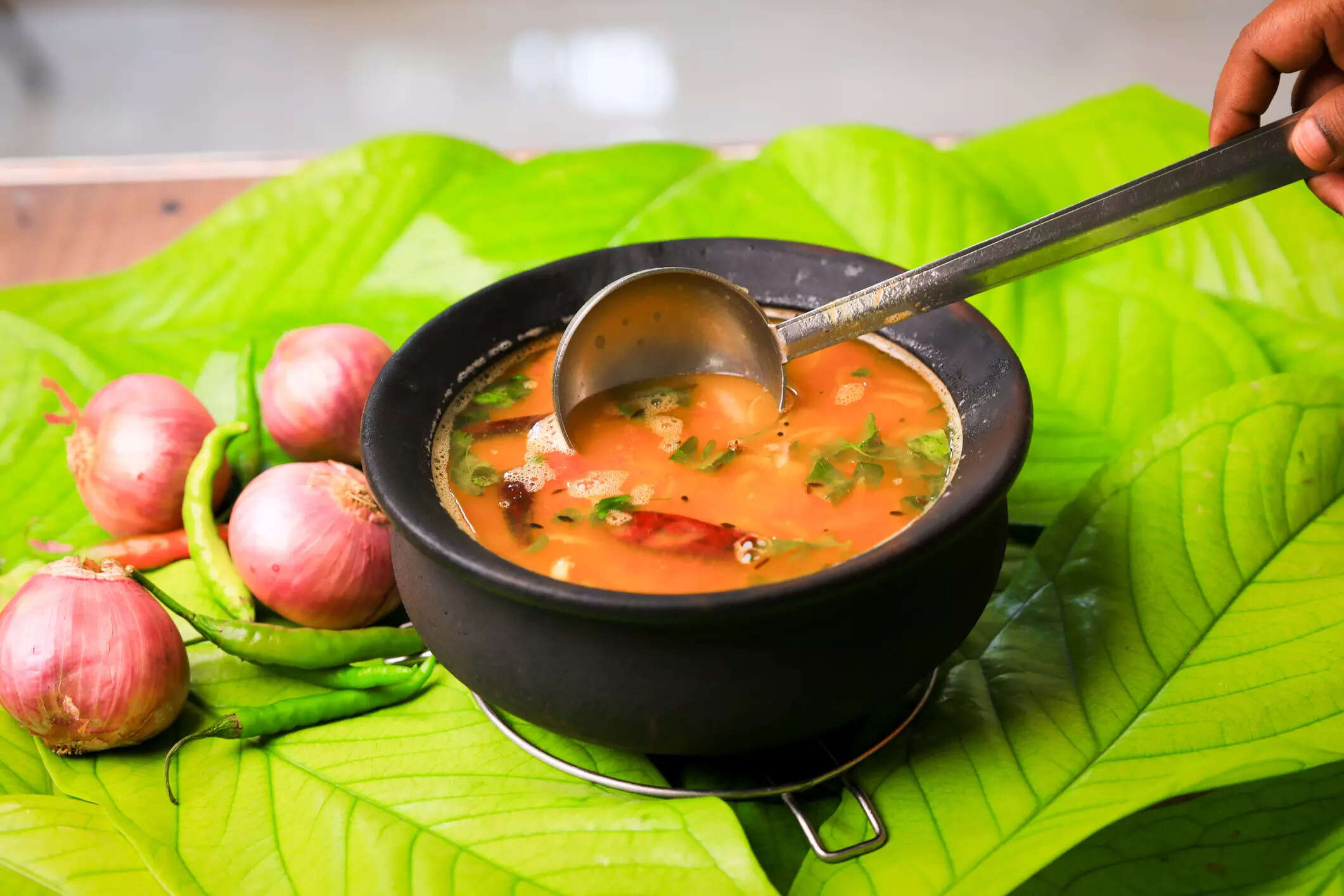Sambar vs. Rasam: Unveiling The Differences In South Indian Stews

When the conversation steers toward South Indian culinary delights, one cannot overlook the aromatic essence of sambar , a vibrant, yellow-hued lentil soup often accompanying dishes like idli, vada, and dosa. Alongside this celebrated concoction is another esteemed stew, rasam . Both hold pivotal positions in South Indian cuisine , garnering admirers worldwide.
Despite their interchangeable usage in dialogue, these two stalwarts of South Indian cuisine diverge distinctly. Although they bear resemblances with their shared golden tint and stew classification, a closer examination unravels the nuances that render each unique. So, what sets these stews apart? What distinct characteristics define the essence of Sambar and Rasam?
The Tale of Sambar:
Sambar, an indispensable gem in South Indian culinary culture, embodies a lentil-based stew, primarily crafted from toor dal, generously interspersed with an assortment of vegetables like drumsticks, carrots, and potatoes. Notably, the inclusion of tamarind lends its distinctive tangy flavor.
Unveiling Rasam:
On the other end of the spectrum lies Rasam, a revered South Indian stew reminiscent of a spirited soup. Its foundation rests upon tomatoes, seasoned with an amalgamation of assorted spices. Renowned for its fiery zest, Rasam often serves as a prelude to a meal, celebrated for its digestive properties.
Deciphering the Differences:
Spices Speak Volumes:
Sambar and Rasam diverge significantly in their spice composition. While Sambar boasts spices such as methi, turmeric, curry leaves, and mustard seeds, Rasam revels in the prominence of pepper and cumin. The distinct masalas used in both, Sambar masala and Rasam masala, further set them apart.
Flavor Symphony:
The divergence in spices transpires into distinct flavor profiles. Sambar, usually milder, owes its taste to a blend of spices, whereas Rasam's fiery essence, predominantly due to pepper, can be adjusted based on one's spice tolerance.
Texture Tales:
Another stark contrast surfaces in their texture. Sambar's thickness stems from a higher proportion of toor dal, whereas Rasam's soup-like consistency arises from a higher water content and lesser dal.
Serving Styles:
Beyond their culinary preparation, their serving styles also diverge. Sambar harmonizes seamlessly with main-course meals, complementing dosa, idli, or steamed rice. Conversely, Rasam takes center stage as a pre-meal soup, although it pairs gracefully with rice as well.
In essence, the intricate tapestry of dissimilarities between Sambar and Rasam encompasses their spice profiles, textures, serving traditions, and overall flavor symphonies. Understanding these nuances ensures clarity and appreciation for the distinct identities these South Indian stews embody.